This document provides a sample paper following MLA formatting guidelines. It discusses the key changes in the MLA 8th edition manual, such as omitting delineations for print or web sources. The sample paper then outlines the different sections of an MLA formatted paper, including setting up the first page, font, margins, line spacing, and headings. It provides examples of how to format the works cited list, with entries for sources with different numbers of authors, different titles for authors, containers, and more. Guidance is given on punctuation, order, and other specifics for the works cited list and in-text citations.
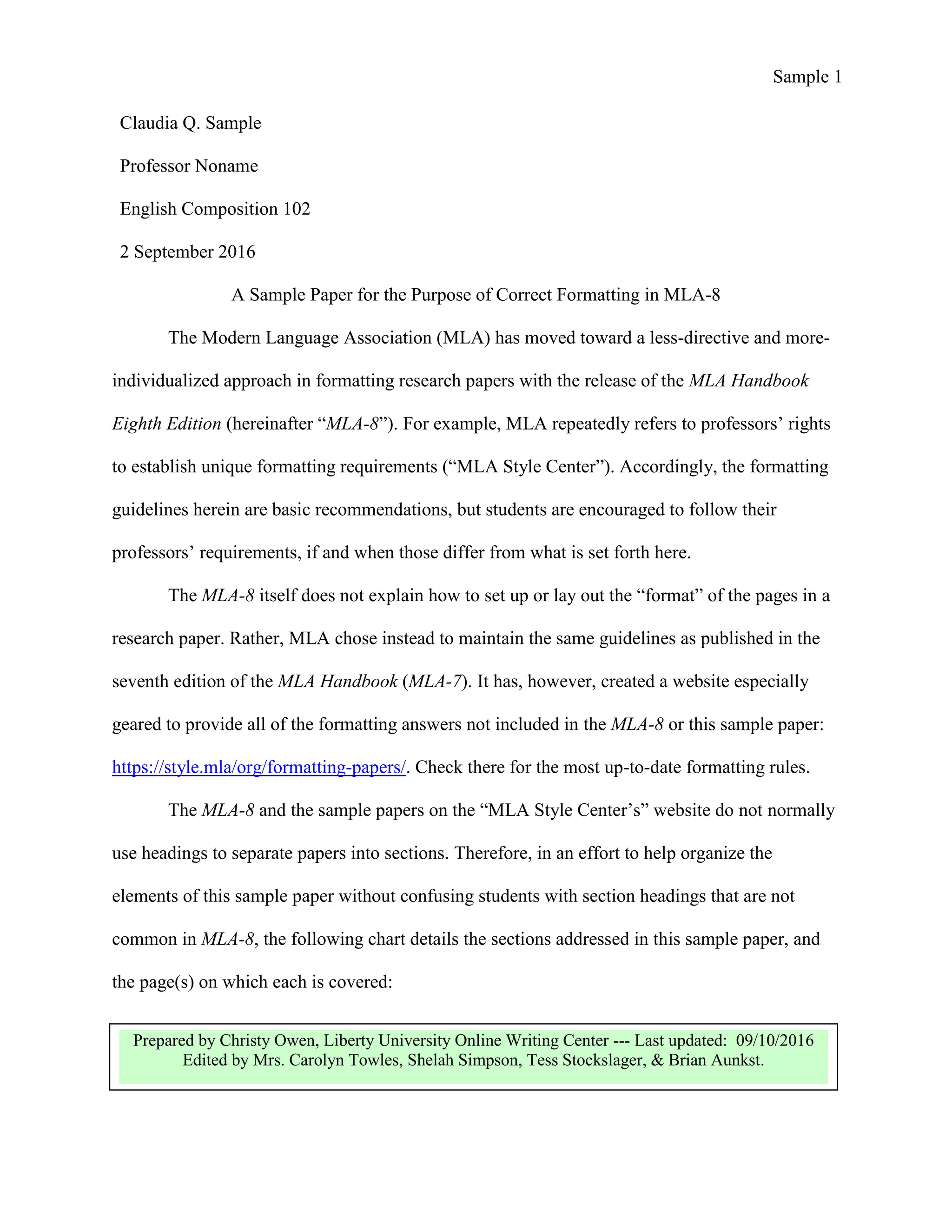
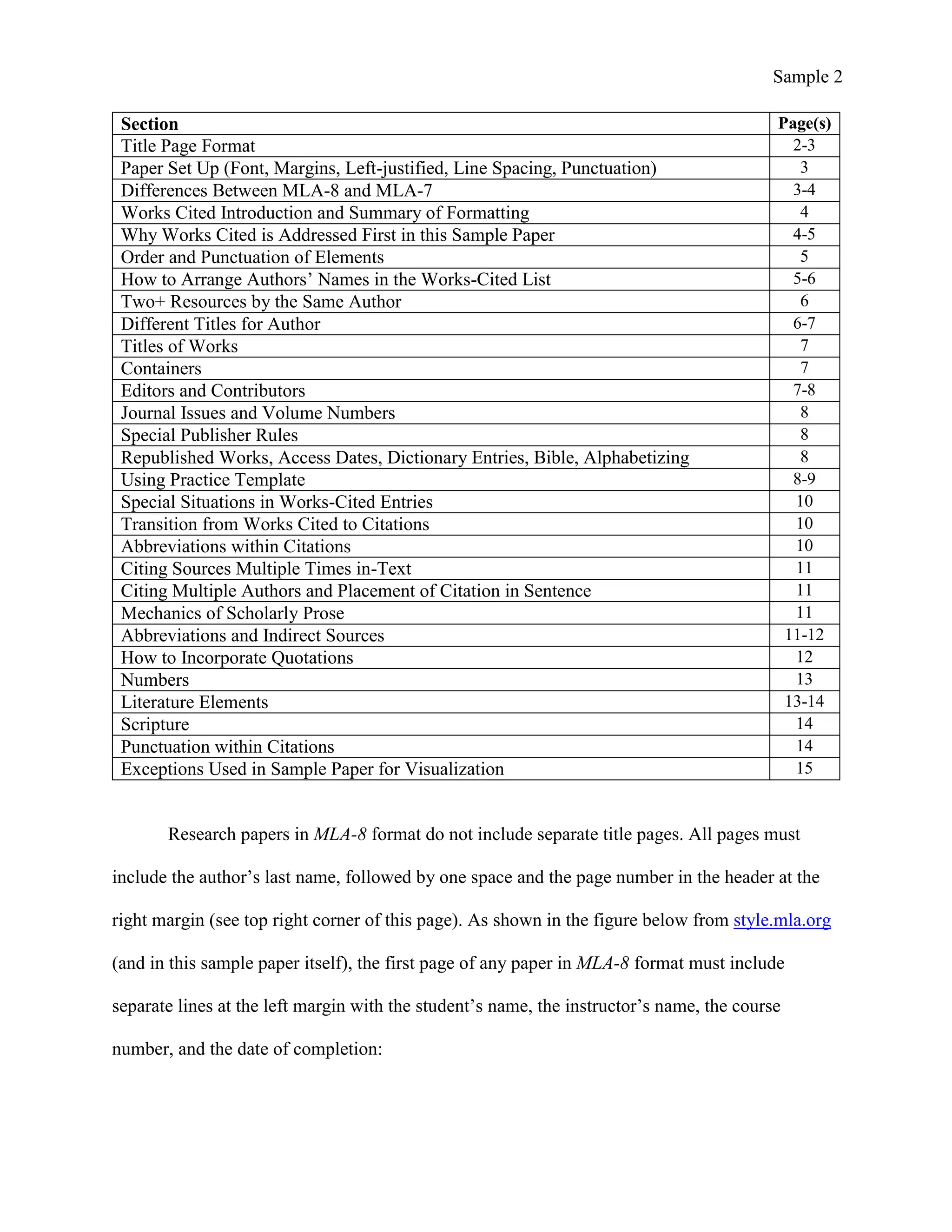
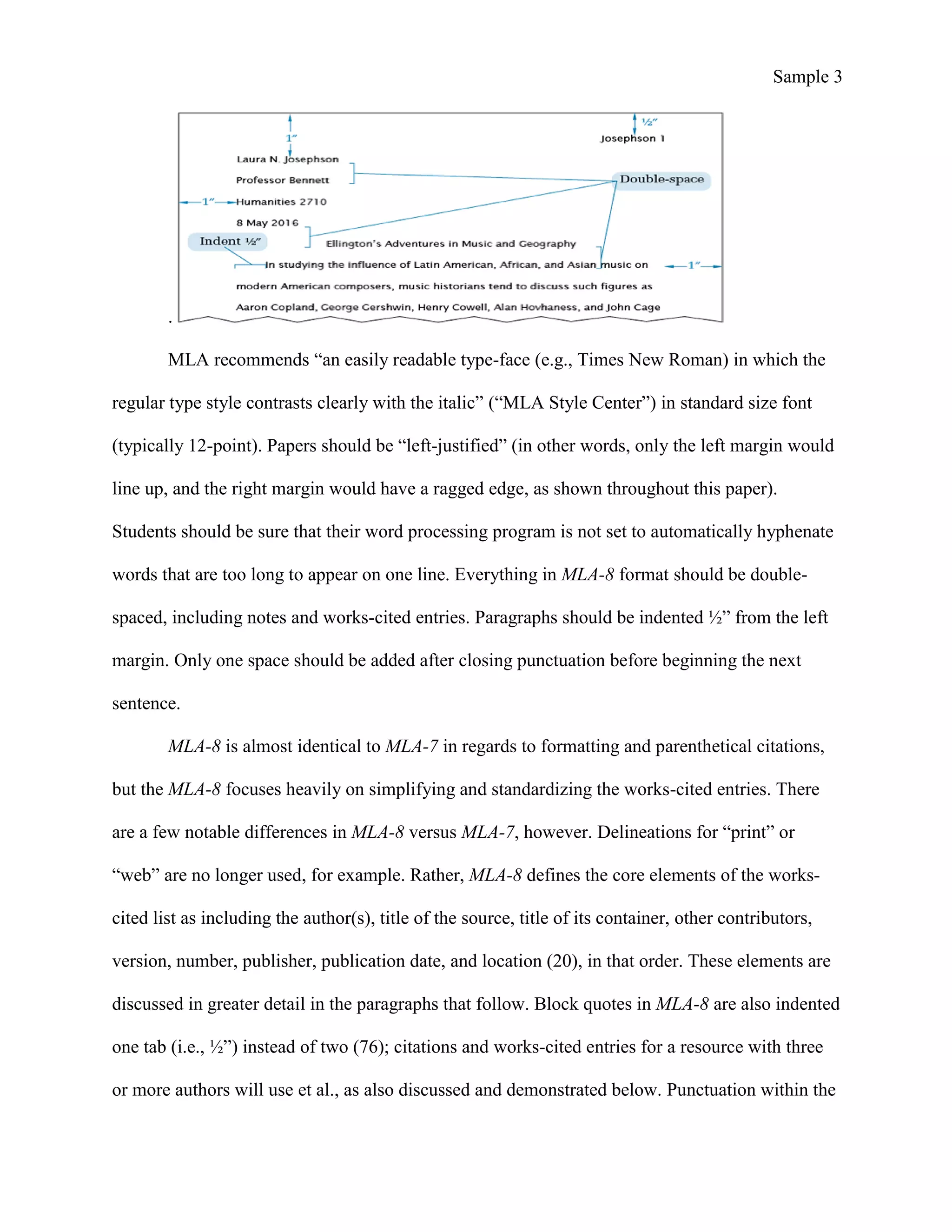
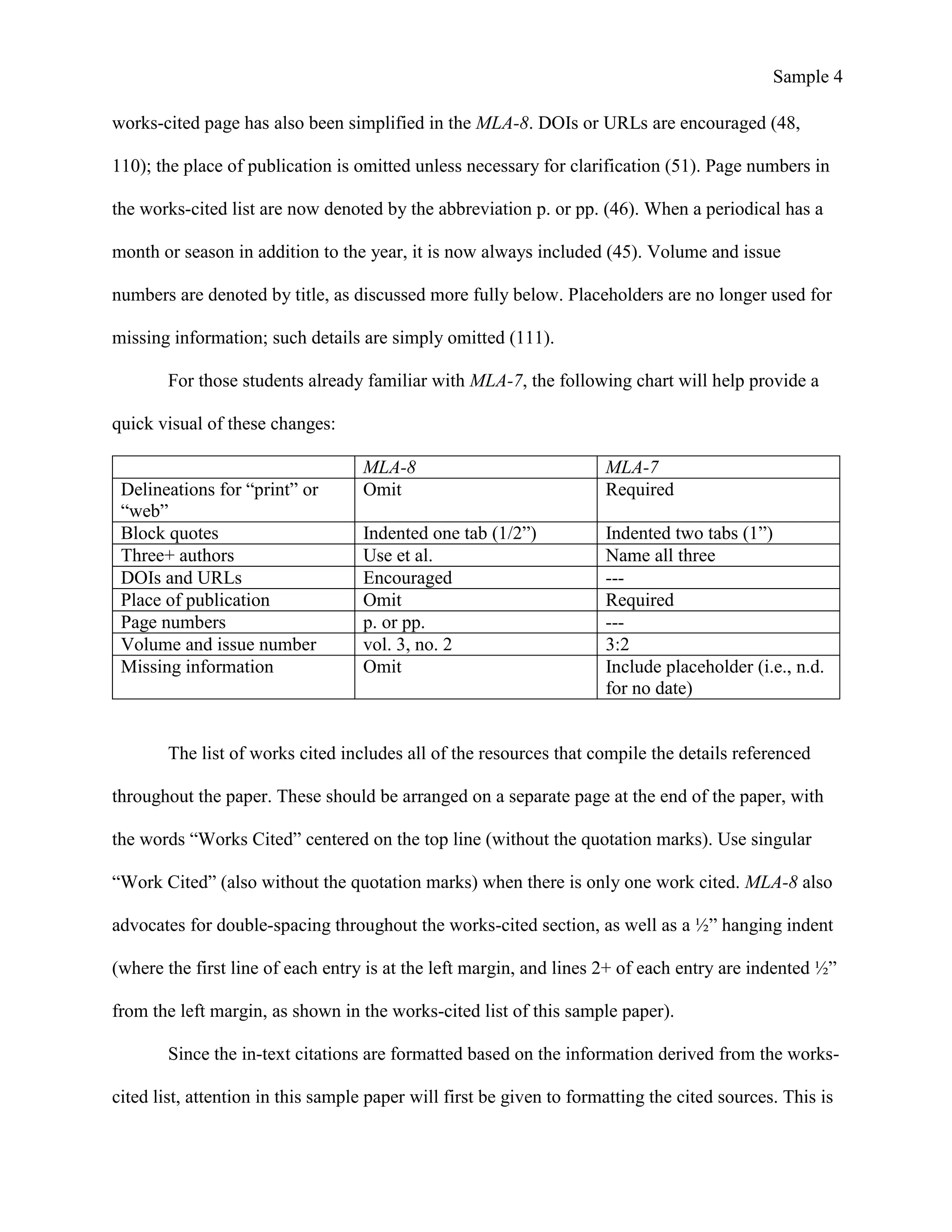
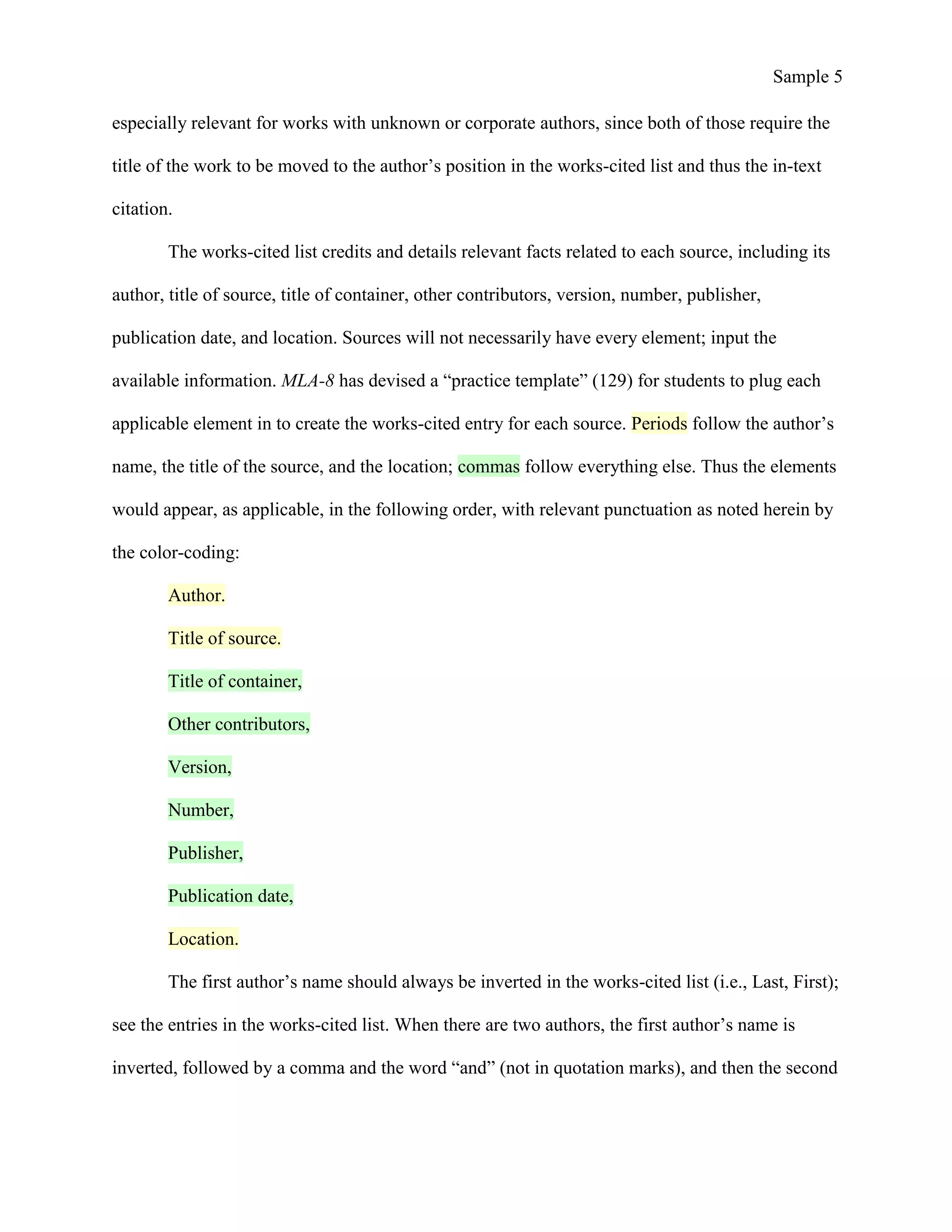
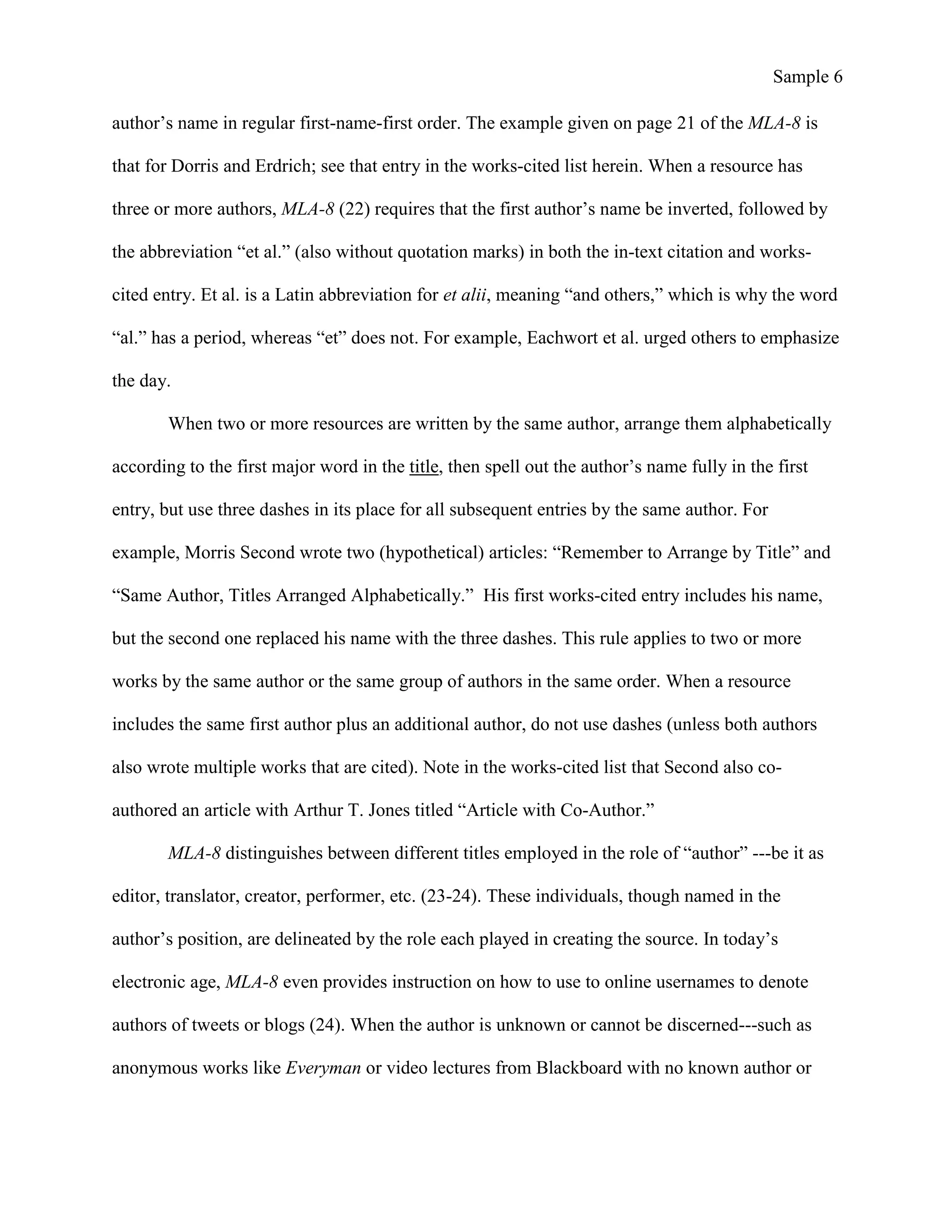
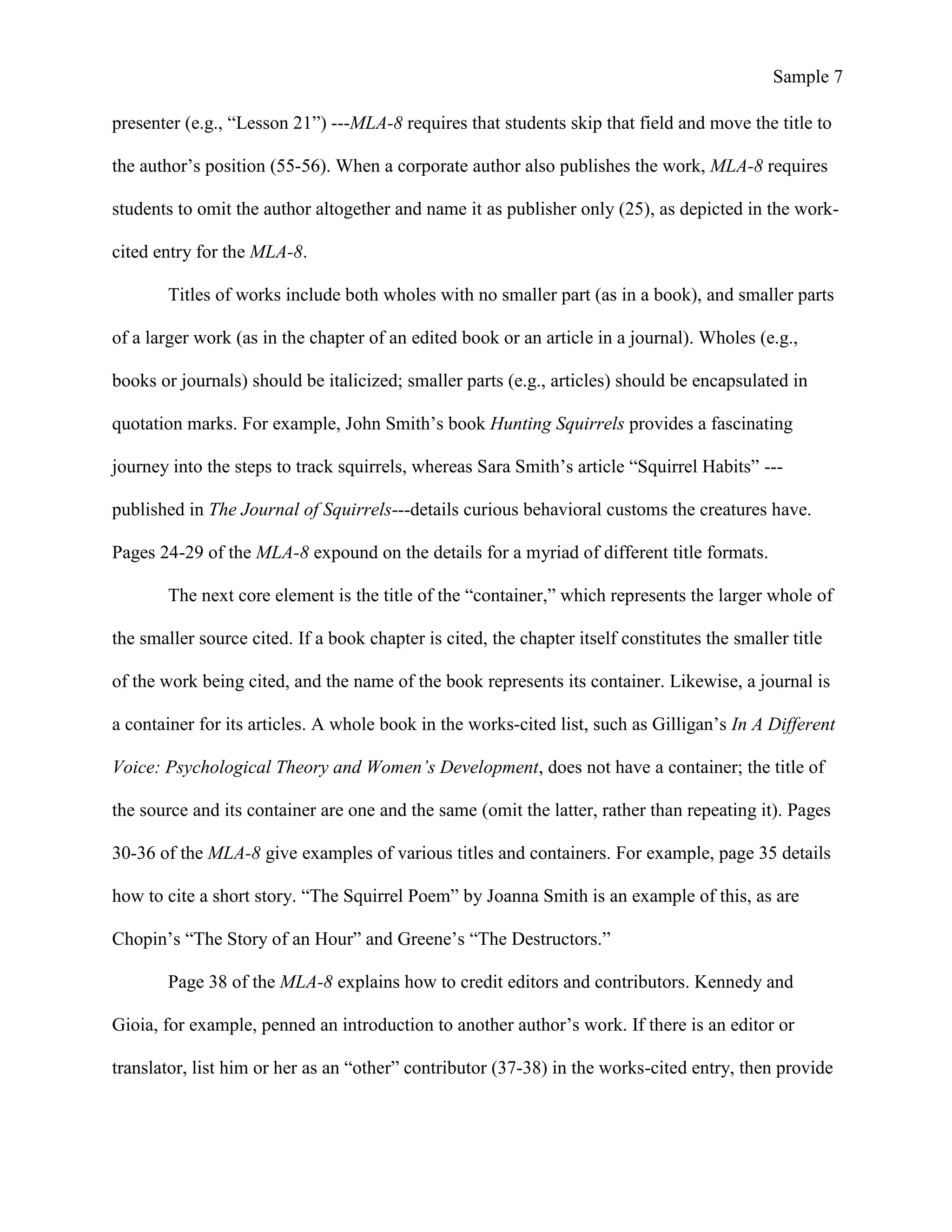
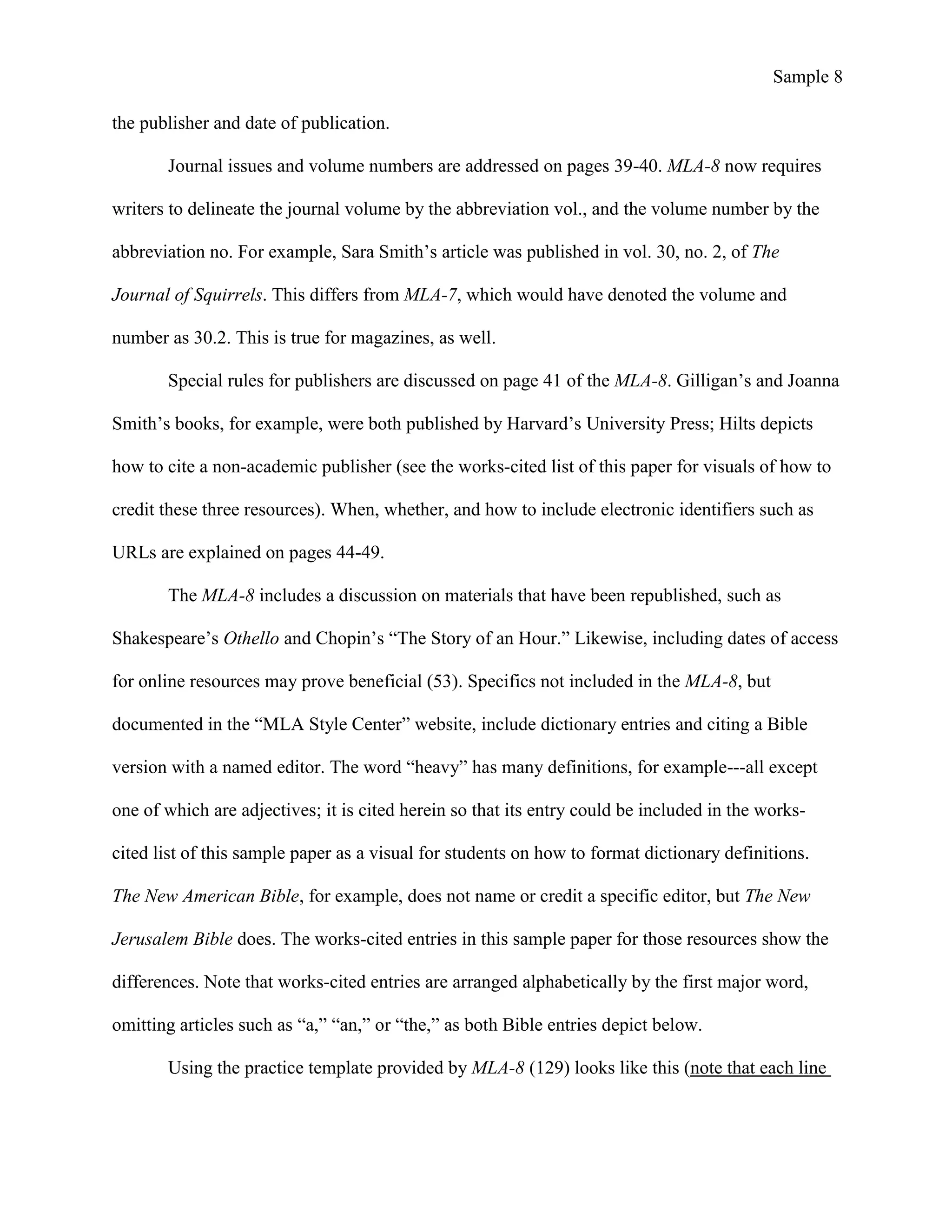

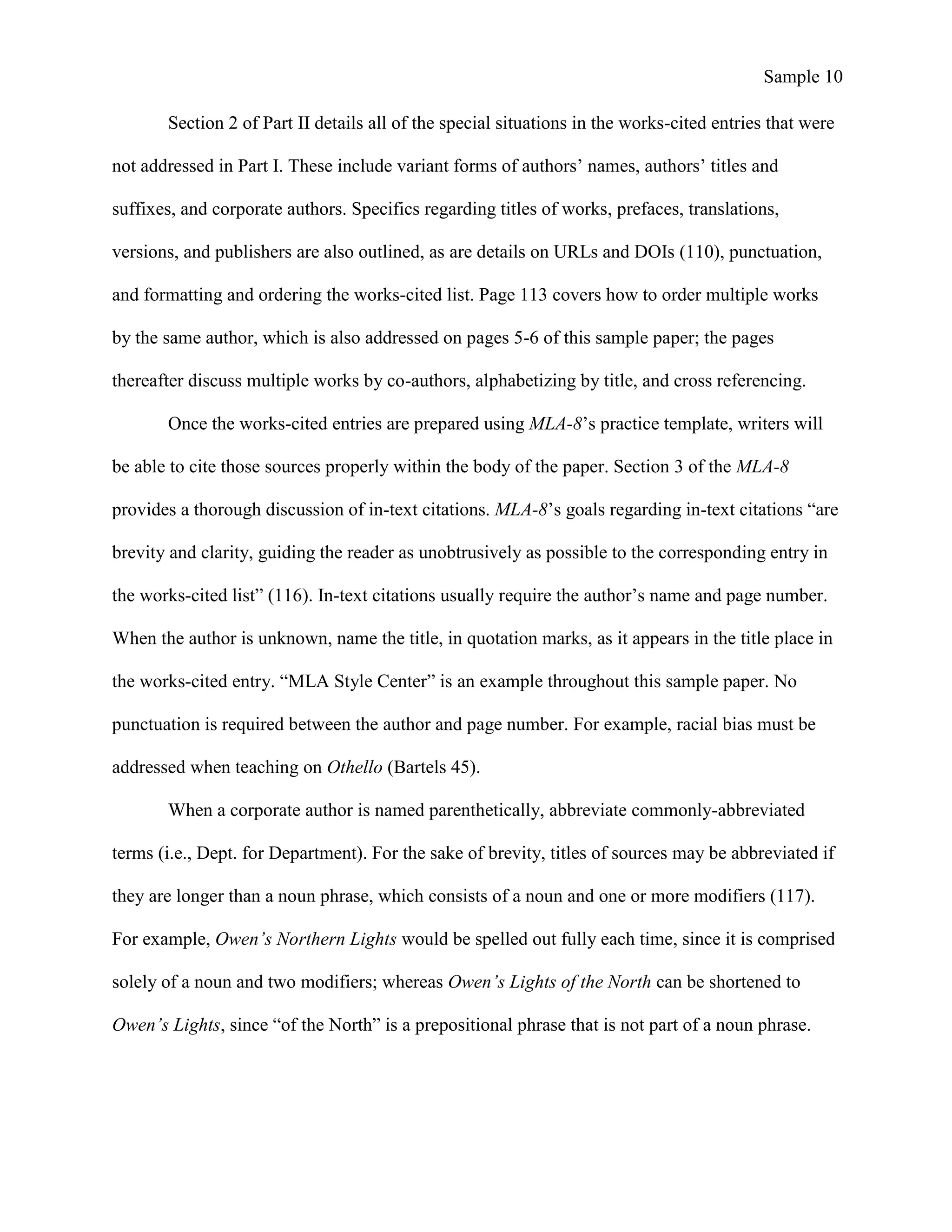
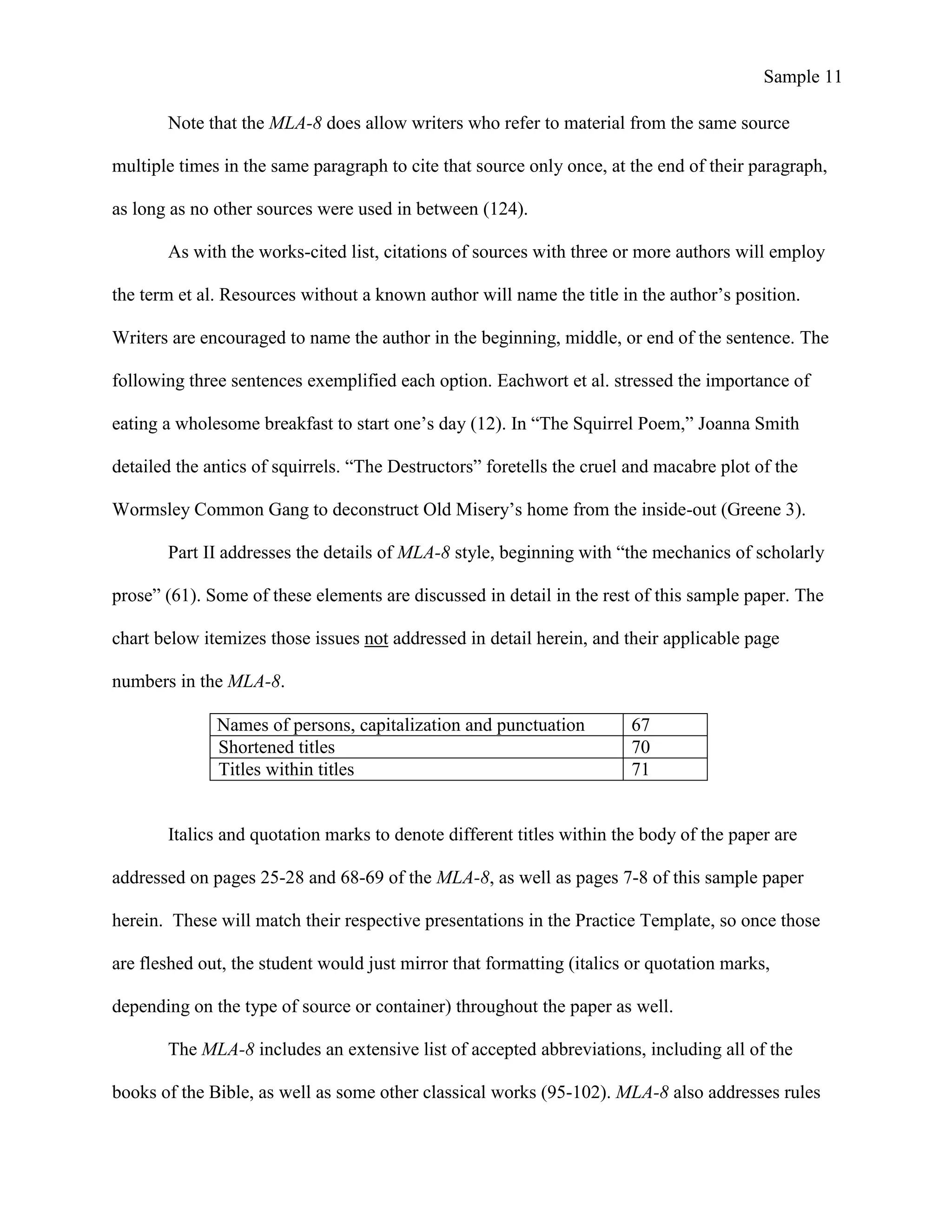
![Sample 12
on indirect sources, beginning on page 124. It favors finding the original source whenever
possible, but details how to incorporate an indirect source when the original source is not
available. For example, Bhabha believes that boundaries are created when critics insist upon
bearing “witness to the unequal and uneven forces of cultural representation" (qtd. in Bartels 46).
Beginning on page 75, MLA-8 delves into how to incorporate quotations into one’s own
work (including specific rules for prose, poetry, and drama). Punctuation within quotations is
addressed on page 87. Note the different rules for short quotes (four lines or less) versus larger
quotes (more than four lines), as discussed on page 78 of the MLA-8 and exemplified throughout
this paper. Quotes four lines or less1
should be incorporated directly into the paragraph, along
with other related sentences; the period falls after the parenthetical citation for such shorter
quotes (76). If a parenthetical citation includes a number that is not a page or line number,
include an abbreviated label, such as par. for paragraph, or ch. for chapter (126-27). For
example, in Greene’s story “The Destructors,” the main character is described as a “new recruit
[who] had been with the gang since the beginning of the summer holidays, and there were
possibilities about his brooding silence that all recognized. He never wasted a word even to tell
his name until that was required of him by the rules” (par. 2).
Quotes greater than four lines must be blocked (exception: only three lines in poetry,
discussed below), with the entire left margin of that quote indented ½” (MLA-8 76-80). Block
quotes are introduced with a colon; the closing punctuation follows after the end of the quote,
before the parenthetical citation. For example:
There would be no one to live for her during those coming years; she would live for
herself. There would be no powerful will bending hers in that blind persistence with
1
Exception: three lines or less for poetry.](https://image.slidesharecdn.com/mla-8samplepaper-171129223740/75/MLA-8-Sample-Paper-by-Liberty-University-12-2048.jpg)
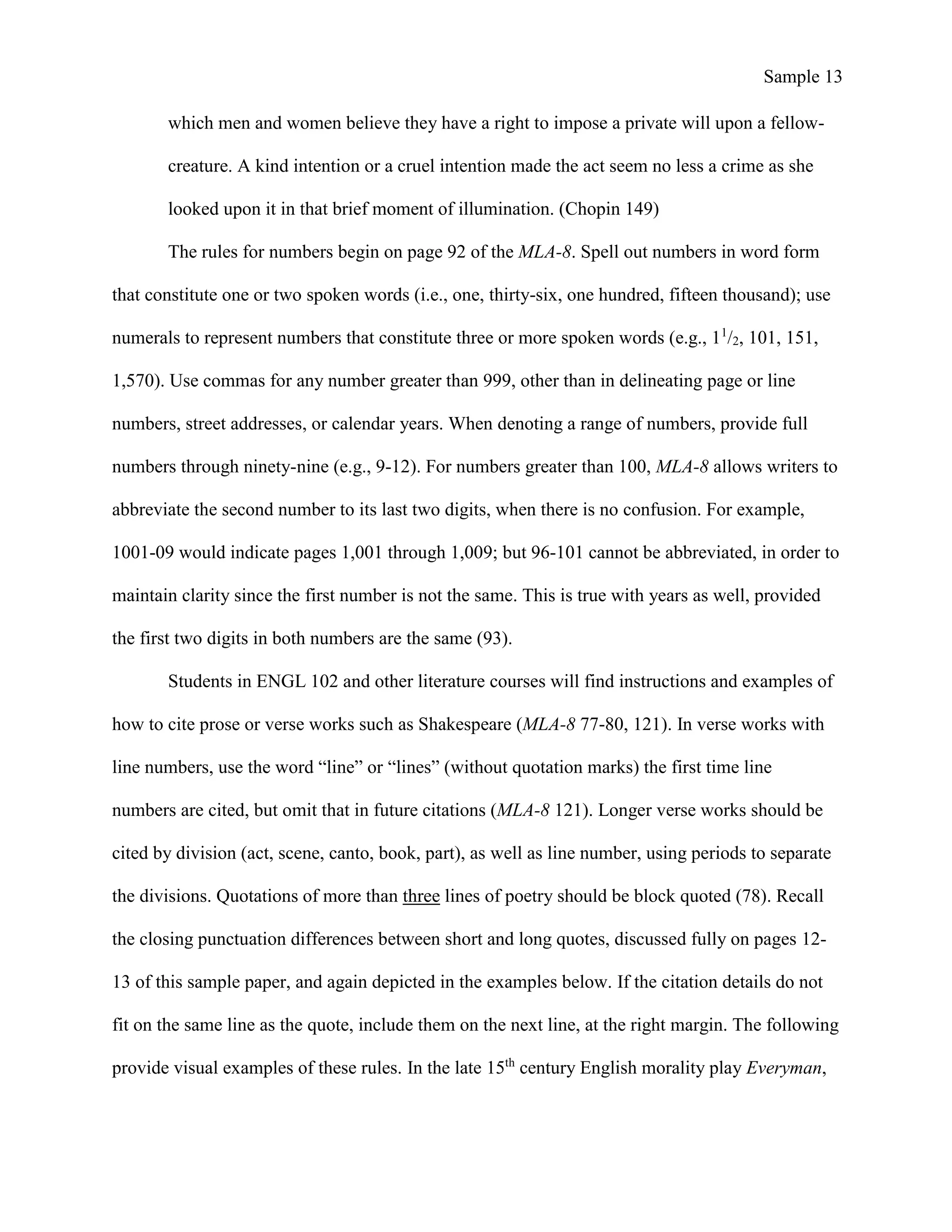
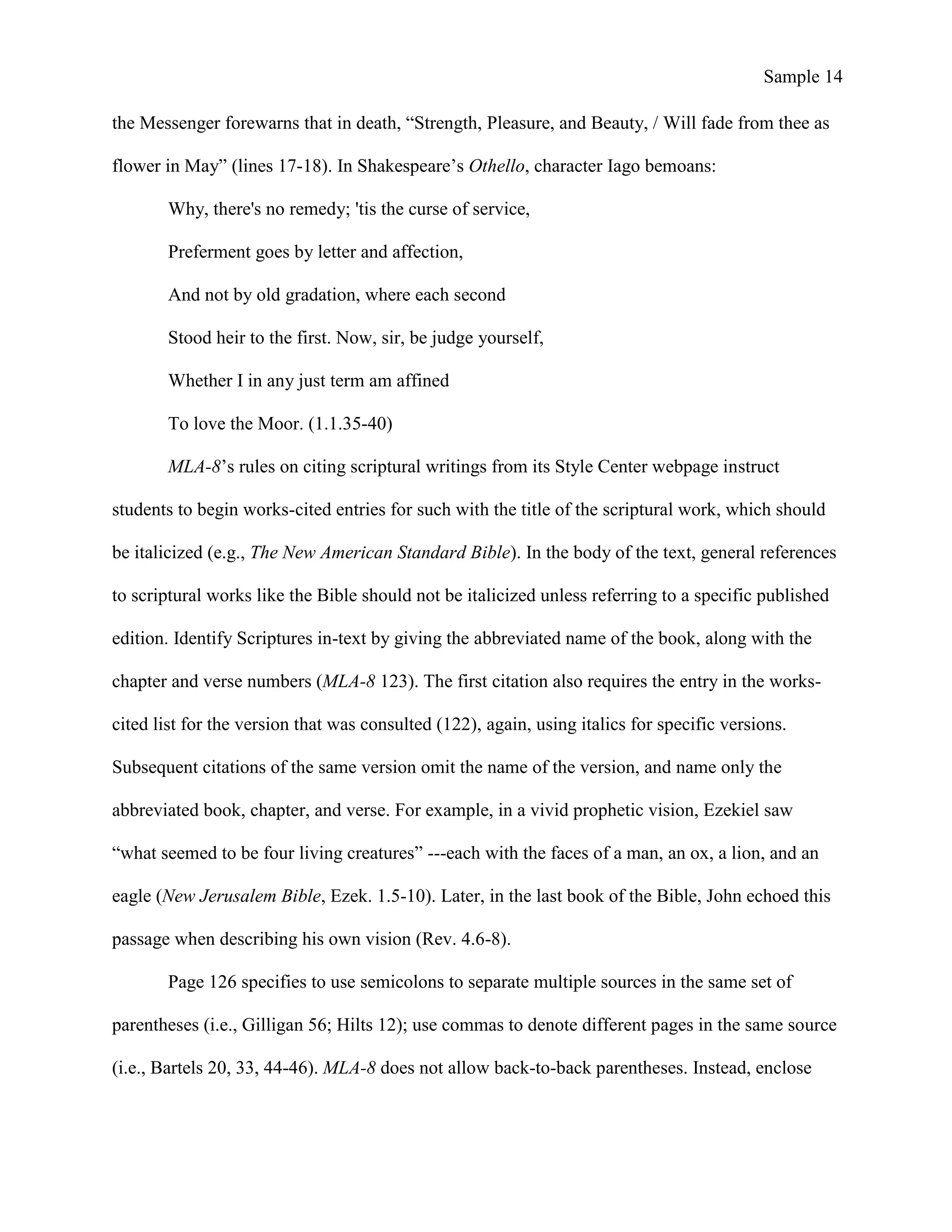


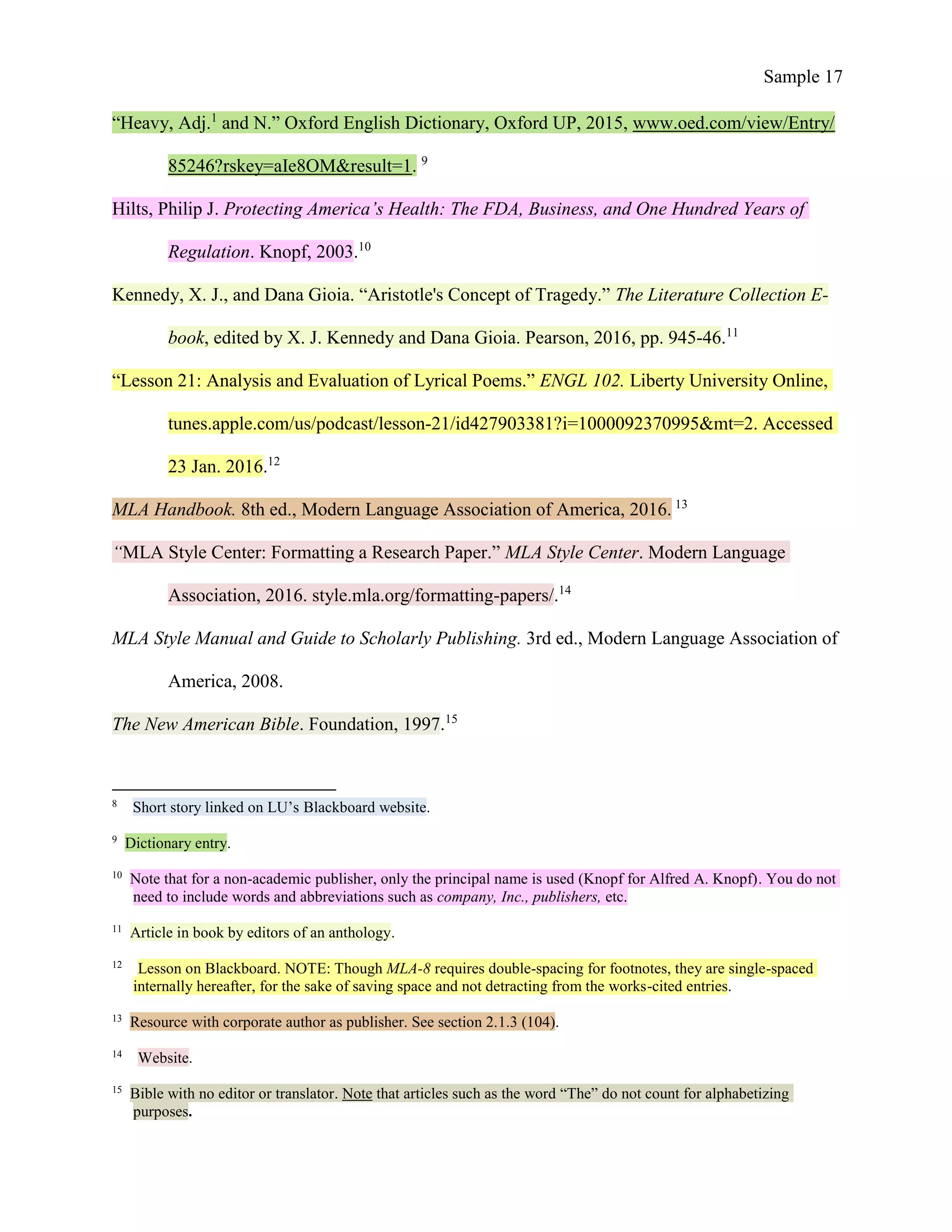
![Sample 18
The New Jerusalem Bible. General editor, Henry Wansbrough, Doubleday, 1985.16
Second, Morris P. “Remember to Arrange by Title.” Journal of Styling Skills, vol. 11, no. 1,
2015, p. 18.
---, “Same Author, Titles Arranged Alphabetically.” Journal of Styling Skills, vol. 8, 2011, pp.
12-13. 17
Second, Morris P., and Arthur T. Jones. “Article with a Co-Author.” Partners in Ethics, vol. 2,
2016, pp. 10-11.18
Shakespeare, William. Othello. [circa 1602]. The Literature Collection E-book, edited by X. J.
Kennedy and Dana Gioia. Pearson, 2016, pp. 898-a912.19
Smith, Joanna. “The Squirrel Poem.” Poems about Wildlife, edited by John Smith, Harvard UP,
2016, pp. 122-23.20
Smith, John. Hunting Squirrels. Mifflin Publishing, 2004.21
Smith, Sara. “Squirrel Habits.” The Journal of Squirrels, vol. 30, no. 2, 2009, JSTOR,
http://www.jstor.org/stable/10.1086/000001.22
16
Bible with one editor.
17
Two resources by the same author, in different years. Arrange alphabetically by title and add three dashes in the
author’s position for the second+ sources by that same author.
18
A resource with a co-author, when the first author also published multiple resources alone. Note no dashes are
used.
19
Drama with unknown original date. From MLA’s website: “Placeholders for unknown information like n.d. (“no
date”) are no longer used. If facts missing from a work are available in a reliable external resource, they are cited
in square brackets. Otherwise, they are simply omitted.” See p. 111 of MLA-8.
20
Work in an anthology.
21
Book with one author.
22
Journal article retrieved from a database.](https://image.slidesharecdn.com/mla-8samplepaper-171129223740/75/MLA-8-Sample-Paper-by-Liberty-University-18-2048.jpg)